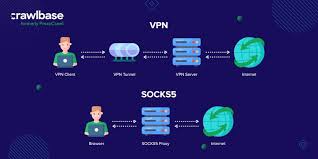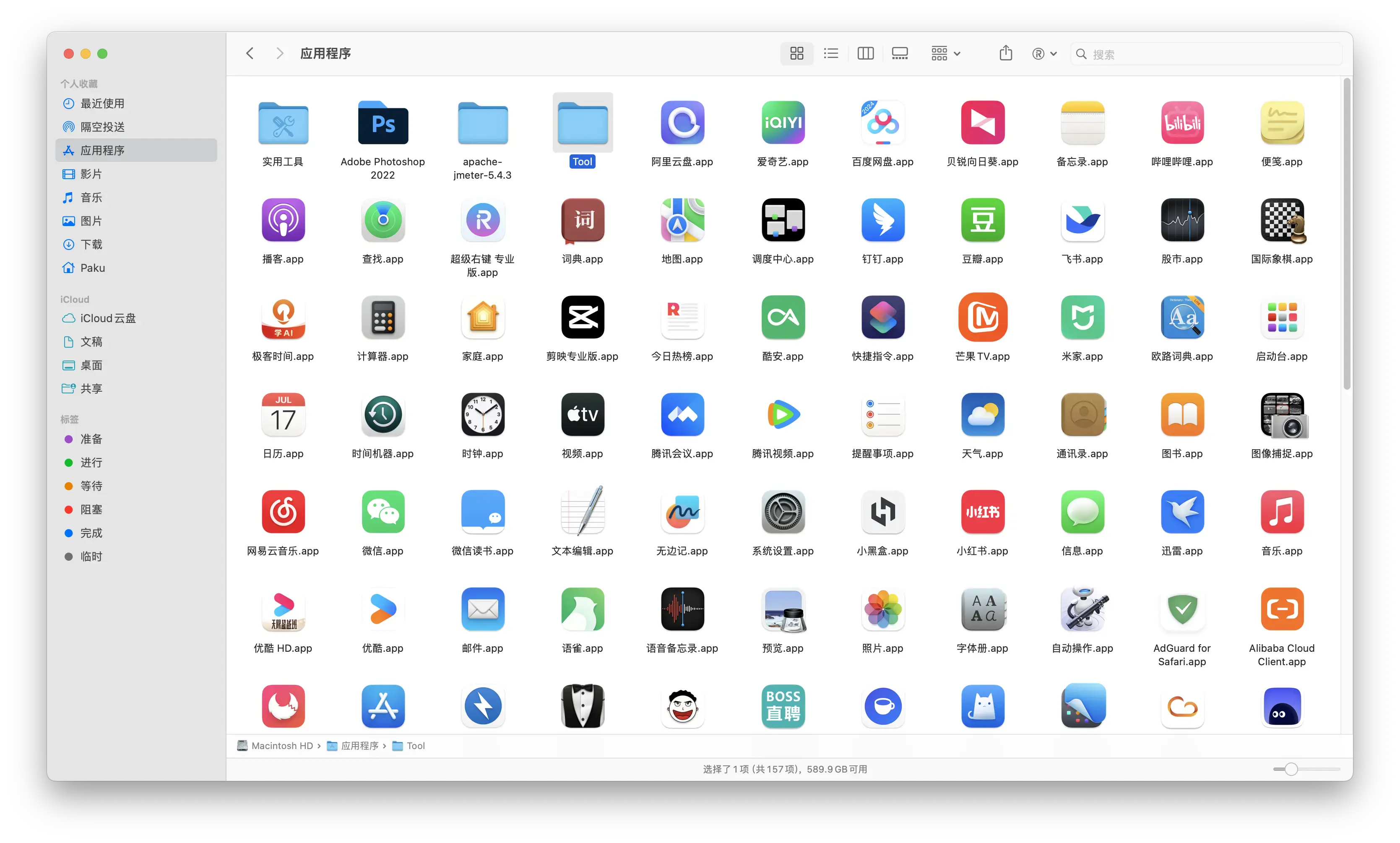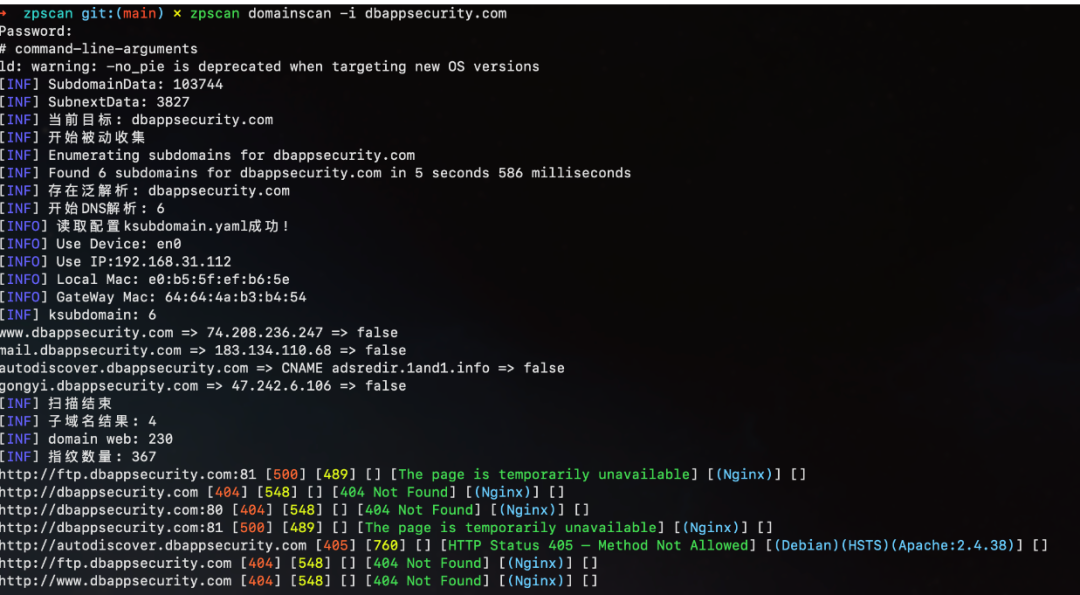# (一)关于加密算法 {#一-关于加密算法}
信息加密是现在几乎所有项目都需要用到的技术,身份认证、单点登陆、信息通讯、支付交易等场景中经常会需要用到加密算法,所谓加密算法,就是将原本的明文通过一系列算法操作变成密文。接下来就介绍一下目前比较常用的一些加密算法,本期不涉及算法底层,以应用介绍和代码展示为主。
如果只想了解原理,可跳过代码部分,代码可直接拿来使用。
# (二)MD5算法 {#二-md5算法}
准确来讲,MD5不是一种加密算法 ,而是一种摘要算法 ,MD5能将明文输出为128bits的字符串,这个字符串是无法再被转换成明文的。网上一些MD5解密网站也只是保存了一些字符串对应的md5串,通过已经记录的md5串来找出原文。
我做过的几个项目中经常见到MD5用在加密上的场景。比如对密码的加密,生成一个密码后,使用MD5生成一个128位字符串保存在数据库中,用户输入密码后也先生成MD5串,再去数据库里比较。因此我们在找回密码时是无法得到原来的密码的,因为明文密码根本不会被保存。
public class MD5 {
/**
* 生成MD5
* @param str
* @return
*/
public String encode(String str) {
byte[] result = null;
try {
MessageDigest md = MessageDigest.getInstance("MD5");
md.update(str.getBytes("UTF-8"));
result = md.digest();
} catch (Exception e) {
e.printStackTrace();
return null;
}
return parseByte2HexStr(result);
}
/**
* 将二进制转换成十六进制
*
* @param buf
* @return
*/
private String parseByte2HexStr(byte buf[]) {
StringBuffer sb = new StringBuffer();
for (int i = 0; i < buf.length; i++) {
String hex = Integer.toHexString(buf[i] & 0xFF);
if (hex.length() == 1) {
hex = '0' + hex;
}
sb.append(hex.toUpperCase());
}
return sb.toString();
}
public static void main(String[] args) {
MD5 md5=new MD5();
String content = "测试test";
System.out.println(md5.encode(content));
}
}
1
2
3
4
5
6
7
8
9
10
11
12
13
14
15
16
17
18
19
20
21
22
23
24
25
26
27
28
29
30
31
32
33
34
35
36
37
38
39
40
41
42
43
44
# (三)SHA1算法 {#三-sha1算法}
SHA1也是和MD5类似的信息摘要算法,但是它比MD5更加安全。
public class SHA1 {
public String encode(String str) {
try {
MessageDigest md = MessageDigest.getInstance("SHA-1");
md.update(str.getBytes("utf-8"));
byte[] digest = md.digest();
return byteToHexString(digest);
} catch (Exception e) {
e.printStackTrace();
return null;
}
}
public static String byteToHexString(byte[] bytes) {
return String.valueOf(Hex.encodeHex(bytes));
}
public static void main(String[] args) {
SHA1 sha1 = new SHA1();
String content = "测试test";
System.out.println(sha1.encode(content));
}
}
1
2
3
4
5
6
7
8
9
10
11
12
13
14
15
16
17
18
19
20
21
22
# (四)AES算法 {#四-aes算法}
AES是很常见的对称加密算法 ,所谓对称加密,就是通过密钥加密后可以再通过密钥解密。我接触过的某个国企现在内部就是采用AES的方式实现集成登陆。第三方系统提供一个接收用户信息的接口,该国企将用户信息AES加密后通过这个接口传递给第三方系统,第三方系统自行实现登陆操作。这里需要注意的是密钥十分重要,如果密钥丢失,就有信息泄漏的风险。
public class AES {
/**
* 将传入的明文转换为密文
* @param str
* @param pwd
* @return
*/
public String encode(String str,String pwd) {
byte[] result = null;
try {
KeyGenerator kgen = KeyGenerator.getInstance("AES");
SecureRandom random = SecureRandom.getInstance("SHA1PRNG");
random.setSeed(pwd.getBytes());
kgen.init(128, random);
SecretKey secretKey = kgen.generateKey();
byte[] enCodeFormat = secretKey.getEncoded();
SecretKeySpec key = new SecretKeySpec(enCodeFormat, "AES");
// 创建密码器
Cipher cipher = Cipher.getInstance("AES/ECB/PKCS5Padding");
cipher.init(Cipher.ENCRYPT_MODE, key);
byte[] byteContent = str.getBytes();
result = cipher.doFinal(byteContent);
} catch (Exception e) {
return null;
}
return parseByte2HexStr(result);
}
/**
* 将传入的密文转换为明文
* @param str
* @param pwd
* @return
*/
public String decode(String str,String pwd) {
byte[] result = null;
byte[] content = parseHexStr2Byte(str);
try {
KeyGenerator kgen = KeyGenerator.getInstance("AES");
SecureRandom random = SecureRandom.getInstance("SHA1PRNG");
random.setSeed(pwd.getBytes());
kgen.init(128, random);
SecretKey secretKey = kgen.generateKey();
byte[] enCodeFormat = secretKey.getEncoded();
SecretKeySpec key = new SecretKeySpec(enCodeFormat, "AES");
// 创建密码器
Cipher cipher = Cipher.getInstance("AES/ECB/PKCS5Padding");
cipher.init(Cipher.DECRYPT_MODE, key);
result = cipher.doFinal(content);
} catch (Exception e) {
e.printStackTrace();
return null;
}
return new String(result);
}
/**
* 将二进制转换成十六进制
*
* @param buf
* @return
*/
private String parseByte2HexStr(byte buf[]) {
StringBuffer sb = new StringBuffer();
for (int i = 0; i < buf.length; i++) {
String hex = Integer.toHexString(buf[i] & 0xFF);
if (hex.length() == 1) {
hex = '0' + hex;
}
sb.append(hex.toUpperCase());
}
return sb.toString();
}
/**
* 将十六进制转换为二进制
*
* @param hexStr
* @return
*/
private byte[] parseHexStr2Byte(String hexStr) {
if (hexStr.length() < 1) {
return null;
}
byte[] result = new byte[hexStr.length() / 2];
for (int i = 0; i < hexStr.length() / 2; i++) {
int high = Integer.parseInt(hexStr.substring(i * 2, i * 2 + 1), 16);
int low = Integer.parseInt(hexStr.substring(i * 2 + 1, i * 2 + 2), 16);
result[i] = (byte) (high * 16 + low);
}
return result;
}
public static void main(String[] args) {
AES aes = new AES();
String content = "测试加密";
// AES的密钥长度最好是16位(不是必须)
String pwd = "javayznbjavayznb";
// 加密
System.out.println("加密前:" + content);
String encodeResultStr = aes.encode(content,pwd);
System.out.println("加密后:" + encodeResultStr);
// 解密
String decodeResultStr = aes.decode(encodeResultStr,pwd);
System.out.println("解密后:" + decodeResultStr);
}
}
1
2
3
4
5
6
7
8
9
10
11
12
13
14
15
16
17
18
19
20
21
22
23
24
25
26
27
28
29
30
31
32
33
34
35
36
37
38
39
40
41
42
43
44
45
46
47
48
49
50
51
52
53
54
55
56
57
58
59
60
61
62
63
64
65
66
67
68
69
70
71
72
73
74
75
76
77
78
79
80
81
82
83
84
85
86
87
88
89
90
91
92
93
94
95
96
97
98
99
100
101
102
103
104
105
106
107
108
109
110
111
112
113
114
115
# (五)DES {#五-des}
DES也是一种对称加密算法,但是在安全性、效率和灵活性上比AES略差,但是也能保证安全,DES也需要通过密钥进行加密,通过密钥进行解密,因此密钥很重要:
public class DES {
/**
* 将传入的明文转换为密文
* @param str
* @param pwd
* @return
*/
public String encode(String str,String pwd) {
byte[] result = null;
try {
DESKeySpec keySpec = new DESKeySpec(pwd.getBytes());
SecretKeyFactory keyFactory = SecretKeyFactory.getInstance("DES");
SecretKey key = keyFactory.generateSecret(keySpec);
Cipher cipher = Cipher.getInstance("DES/ECB/PKCS5Padding");
cipher.init(Cipher.ENCRYPT_MODE, key);
byte[] byteContent = str.getBytes();
result = cipher.doFinal(byteContent);
} catch (Exception e) {
e.printStackTrace();
return null;
}
return parseByte2HexStr(result);
}
/**
* 将传入的密文转换为明文
* @param str
* @param pwd
* @return
*/
public String decode(String str,String pwd) {
byte[] result = null;
byte[] content = parseHexStr2Byte(str);
try {
DESKeySpec keySpec = new DESKeySpec(pwd.getBytes());
SecretKeyFactory keyFactory = SecretKeyFactory.getInstance("DES");
SecretKey key = keyFactory.generateSecret(keySpec);
Cipher cipher = Cipher.getInstance("DES/ECB/PKCS5Padding");
cipher.init(Cipher.DECRYPT_MODE, key);
result = cipher.doFinal(content);
} catch (Exception e) {
e.printStackTrace();
return null;
}
return new String(result);
}
/**
* 将二进制转换成十六进制
*
* @param buf
* @return
*/
private String parseByte2HexStr(byte buf[]) {
StringBuffer sb = new StringBuffer();
for (int i = 0; i < buf.length; i++) {
String hex = Integer.toHexString(buf[i] & 0xFF);
if (hex.length() == 1) {
hex = '0' + hex;
}
sb.append(hex.toUpperCase());
}
return sb.toString();
}
/**
* 将十六进制转换为二进制
*
* @param hexStr
* @return
*/
private byte[] parseHexStr2Byte(String hexStr) {
if (hexStr.length() < 1) {
return null;
}
byte[] result = new byte[hexStr.length() / 2];
for (int i = 0; i < hexStr.length() / 2; i++) {
int high = Integer.parseInt(hexStr.substring(i * 2, i * 2 + 1), 16);
int low = Integer.parseInt(hexStr.substring(i * 2 + 1, i * 2 + 2), 16);
result[i] = (byte) (high * 16 + low);
}
return result;
}
public static void main(String[] args) {
DES des = new DES();
String content = "测试test";
// DES的密钥长度必须是8位(小于8位则会报错,8位之后对加密结果不会产生影响)
String pwd = "javayznb";
// 加密
System.out.println("加密前:" + content);
String encodeResultStr = des.encode(content,pwd);
System.out.println("加密后:" + encodeResultStr);
//解密
String decodeResultStr = des.decode(encodeResultStr,pwd);
System.out.println("解密后:" + decodeResultStr);
}
}
1
2
3
4
5
6
7
8
9
10
11
12
13
14
15
16
17
18
19
20
21
22
23
24
25
26
27
28
29
30
31
32
33
34
35
36
37
38
39
40
41
42
43
44
45
46
47
48
49
50
51
52
53
54
55
56
57
58
59
60
61
62
63
64
65
66
67
68
69
70
71
72
73
74
75
76
77
78
79
80
81
82
83
84
85
86
87
88
89
90
91
92
93
94
95
96
97
98
99
100
101
102
103
104
# (六)RSA {#六-rsa}
RSA是目前最具影响力的公钥加密算法,并且可以用于加密和验签。支付宝支付对接时用的加密方式就是RSA。在RSA中,存在一对密钥,分别称为公钥和私钥,通过私钥由个人保存,公钥可能多人持有。
RSA的主要应用场景就是加密和验签 ,加密就不用说了,验签是指通过私钥对消息进行签名,使得消息无法篡改和伪造。
加密方式:B传加密数据给A
1、A生成公钥和私钥,私钥自己保留,公钥任何人可以获取。
2、B拿到公钥,将数据通过公钥加密
3、A收到密文,通过私钥解密。
验签方式:A传消息给B 1、A生成公钥和私钥,私钥自己保留,公钥任何人可以获取。
2、A使用私钥对消息加签,并将加签后的消息传给B。
3、B通过公钥验签,如果返回是true则说明消息是A发过来的且未被篡改。
public class TestRSA {
/**
* RSA最大加密明文大小
*/
private static final int MAX_ENCRYPT_BLOCK = 117;
/**
* RSA最大解密密文大小
*/
private static final int MAX_DECRYPT_BLOCK = 128;
/**
* 获取密钥对
*
* @return 密钥对
*/
public static KeyPair getKeyPair() throws Exception {
KeyPairGenerator generator = KeyPairGenerator.getInstance("RSA");
generator.initialize(1024);
return generator.generateKeyPair();
}
/**
* 获取私钥
*
* @param privateKey 私钥字符串
* @return
*/
public static PrivateKey getPrivateKey(String privateKey) throws Exception {
KeyFactory keyFactory = KeyFactory.getInstance("RSA");
byte[] decodedKey = Base64.decodeBase64(privateKey.getBytes());
PKCS8EncodedKeySpec keySpec = new PKCS8EncodedKeySpec(decodedKey);
return keyFactory.generatePrivate(keySpec);
}
/**
* 获取公钥
*
* @param publicKey 公钥字符串
* @return
*/
public static PublicKey getPublicKey(String publicKey) throws Exception {
KeyFactory keyFactory = KeyFactory.getInstance("RSA");
byte[] decodedKey = Base64.decodeBase64(publicKey.getBytes());
X509EncodedKeySpec keySpec = new X509EncodedKeySpec(decodedKey);
return keyFactory.generatePublic(keySpec);
}
/**
* RSA加密
*
* @param data 待加密数据
* @param publicKey 公钥
* @return
*/
public static String encrypt(String data, PublicKey publicKey) throws Exception {
Cipher cipher = Cipher.getInstance("RSA");
cipher.init(Cipher.ENCRYPT_MODE, publicKey);
int inputLen = data.getBytes().length;
ByteArrayOutputStream out = new ByteArrayOutputStream();
int offset = 0;
byte[] cache;
int i = 0;
// 对数据分段加密
while (inputLen - offset > 0) {
if (inputLen - offset > MAX_ENCRYPT_BLOCK) {
cache = cipher.doFinal(data.getBytes(), offset, MAX_ENCRYPT_BLOCK);
} else {
cache = cipher.doFinal(data.getBytes(), offset, inputLen - offset);
}
out.write(cache, 0, cache.length);
i++;
offset = i * MAX_ENCRYPT_BLOCK;
}
byte[] encryptedData = out.toByteArray();
out.close();
// 获取加密内容使用base64进行编码,并以UTF-8为标准转化成字符串
// 加密后的字符串
return new String(Base64.encodeBase64String(encryptedData));
}
/**
* RSA解密
*
* @param data 待解密数据
* @param privateKey 私钥
* @return
*/
public static String decrypt(String data, PrivateKey privateKey) throws Exception {
Cipher cipher = Cipher.getInstance("RSA");
cipher.init(Cipher.DECRYPT_MODE, privateKey);
byte[] dataBytes = Base64.decodeBase64(data);
int inputLen = dataBytes.length;
ByteArrayOutputStream out = new ByteArrayOutputStream();
int offset = 0;
byte[] cache;
int i = 0;
// 对数据分段解密
while (inputLen - offset > 0) {
if (inputLen - offset > MAX_DECRYPT_BLOCK) {
cache = cipher.doFinal(dataBytes, offset, MAX_DECRYPT_BLOCK);
} else {
cache = cipher.doFinal(dataBytes, offset, inputLen - offset);
}
out.write(cache, 0, cache.length);
i++;
offset = i * MAX_DECRYPT_BLOCK;
}
byte[] decryptedData = out.toByteArray();
out.close();
// 解密后的内容
return new String(decryptedData, "UTF-8");
}
/**
* 签名
*
* @param data 待签名数据
* @param privateKey 私钥
* @return 签名
*/
public static String sign(String data, PrivateKey privateKey) throws Exception {
byte[] keyBytes = privateKey.getEncoded();
PKCS8EncodedKeySpec keySpec = new PKCS8EncodedKeySpec(keyBytes);
KeyFactory keyFactory = KeyFactory.getInstance("RSA");
PrivateKey key = keyFactory.generatePrivate(keySpec);
Signature signature = Signature.getInstance("MD5withRSA");
signature.initSign(key);
signature.update(data.getBytes());
return new String(Base64.encodeBase64(signature.sign()));
}
/**
* 验签
*
* @param srcData 原始字符串
* @param publicKey 公钥
* @param sign 签名
* @return 是否验签通过
*/
public static boolean verify(String srcData, PublicKey publicKey, String sign) throws Exception {
byte[] keyBytes = publicKey.getEncoded();
X509EncodedKeySpec keySpec = new X509EncodedKeySpec(keyBytes);
KeyFactory keyFactory = KeyFactory.getInstance("RSA");
PublicKey key = keyFactory.generatePublic(keySpec);
Signature signature = Signature.getInstance("MD5withRSA");
signature.initVerify(key);
signature.update(srcData.getBytes());
return signature.verify(Base64.decodeBase64(sign.getBytes()));
}
public static void main(String[] args) {
try {
// 生成密钥对
KeyPair keyPair = getKeyPair();
String privateKey = new String(Base64.encodeBase64(keyPair.getPrivate().getEncoded()));
String publicKey = new String(Base64.encodeBase64(keyPair.getPublic().getEncoded()));
System.out.println("私钥:" + privateKey);
System.out.println("公钥:" + publicKey);
// RSA加密
String data = "待加密的文字内容";
String encryptData = encrypt(data, getPublicKey(publicKey));
System.out.println("加密后内容:" + encryptData);
// RSA解密
String decryptData = decrypt(encryptData, getPrivateKey(privateKey));
System.out.println("解密后内容:" + decryptData);
// RSA签名
String sign = sign(data, getPrivateKey(privateKey));
System.out.println("加签后:"+sign);
// RSA验签
boolean result = verify(data, getPublicKey(publicKey), sign);
System.out.print("验签结果:" + result);
} catch (Exception e) {
e.printStackTrace();
System.out.print("加解密异常");
}
}
}
1
2
3
4
5
6
7
8
9
10
11
12
13
14
15
16
17
18
19
20
21
22
23
24
25
26
27
28
29
30
31
32
33
34
35
36
37
38
39
40
41
42
43
44
45
46
47
48
49
50
51
52
53
54
55
56
57
58
59
60
61
62
63
64
65
66
67
68
69
70
71
72
73
74
75
76
77
78
79
80
81
82
83
84
85
86
87
88
89
90
91
92
93
94
95
96
97
98
99
100
101
102
103
104
105
106
107
108
109
110
111
112
113
114
115
116
117
118
119
120
121
122
123
124
125
126
127
128
129
130
131
132
133
134
135
136
137
138
139
140
141
142
143
144
145
146
147
148
149
150
151
152
153
154
155
156
157
158
159
160
161
162
163
164
165
166
167
168
169
170
171
172
173
174
175
176
177
178
179
# (七)总结 {#七-总结}
关于加密这个问题不管是工作中还是面试中都会被提及,也必须要掌握。不要求加密的代码能手写,但是要知道每种加密算法是干什么的,是什么样的效果。
 51工具盒子
51工具盒子






